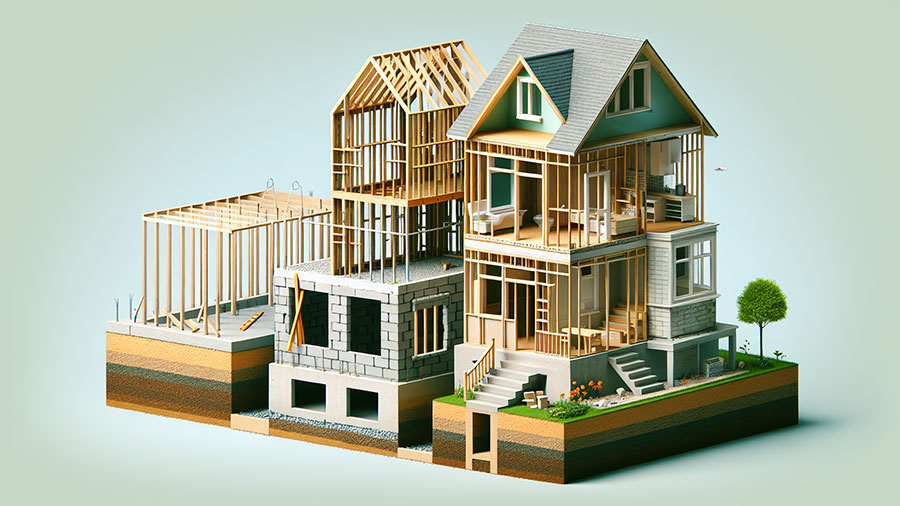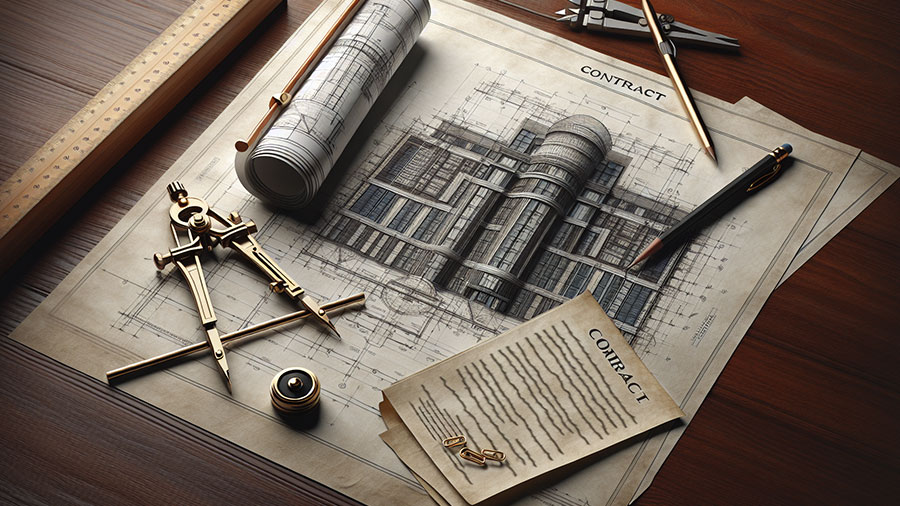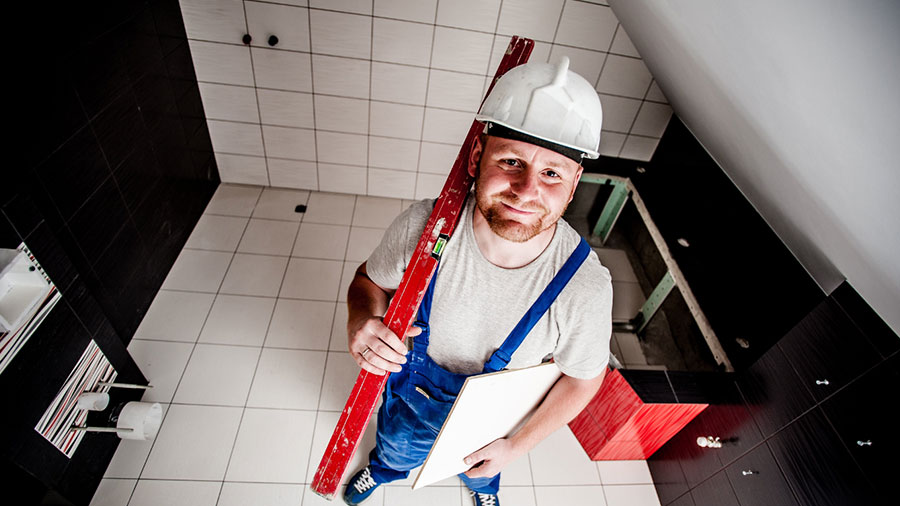Unlocking the Best Construction Loans: Find Your Perfect Match for 2024
Home » Unlocking the Best Construction Loans: Find Your Perfect Match for 2024
Imagine building your dream home from scratch, where every brick and beam reflects your style. Exciting, isn’t it? But, like any dream, it requires careful planning and financing. That’s where construction loans come into play. These loans are the financial bridges that transform your architectural plans into a tangible, livable reality.
Construction loans are specifically designed to provide financing for the construction of a building or property and involve a progressive drawdown of funds.
Applying for a construction loan requires additional steps, documents, and higher interest rates than standard home loans.
Comparing providers is essential to find the best option for one’s needs.

A construction loan is a unique type of home loan designed to finance the construction of a new home. Unlike traditional home loans, which provide a lump sum, construction home loans adopt a ”progressive drawdown” structure, releasing funds in stages as the construction progresses. This means you only pay interest on the amount you’ve drawn down, not the total loan amount. Sounds intriguing, right?
However, remember that most construction loans are interest-only during the construction period, meaning you’re only required to pay the interest on the loan balance. Once the construction is complete, these loans typically transition to principal and interest repayments, just like a standard home loan. So, with the proper planning, construction loans can make the journey to your dream home smooth and manageable.

Now that we’ve unravelled the basics of a construction loan let’s dig deeper and understand the stages of the construction process. The building process is divided into five fundamental stages:
Slab down or base
Frame
Lock-up
Fit-out or fixing
Completion
The beauty of a construction loan lies in its alignment with the progress payment schedule, which is how construction loans work. You draw down funds, pay interest, and make progress payments as each construction stage is completed. Upon completion, the final progress payment is made.
The journey to your dream home begins with the slab down or base stage. This stage lays the foundation for your home, quite literally. It involves measuring and pouring the concrete slab, connecting plumbing and drains, and ensuring effective waterproofing. This stage accounts for approximately 15-20% of the contract and generally takes two weeks.
Just as a well-poured concrete slab provides a stable base for your home, a well-structured construction loan provides a secure financial base for your construction project. Paying at each stage helps the building process and guarantees the durability of your future home.
Once the foundation is established, we move on to the frame stage. This stage forms the skeleton of your home. It involves assembling the physical framework of the building, ensuring compliance with building regulations, and preparing the site for the concrete foundation. The frame stage typically lasts about 5-6 weeks and accounts for between 15 and 20 per cent of the total construction cost.
The progressive drawdown feature of construction loans enables efficient financial management, allowing payments as each stage is completed. It’s like watching your home and your financial plan take shape together.
With the frame in place, we march forward to the lock-up stage. This stage involves building the external walls, installing the doors, and insulation that ”lock up” your property. The lock-up stage typically takes about four weeks, bringing us one step closer to the completion of your dream home.
But what about your construction loan? As you progress through the construction stages, your loan balance increases. However, interest is only paid on the amount drawn down. Progressing steadily, aren’t we?
We start adding character to your home as we approach the fit-out or fixing stage. This stage involves the installation of:
fixtures and fittings
plasterboard
partial installation of cupboards and benches
additional plumbing and electricity
gutters
This stage typically takes 2 to 3 weeks to complete and adds the final touches to your home, making it uniquely yours.
In parallel, your construction loan continues to adapt to your needs, providing funds as each stage is completed. Synchronising your repayments with the construction stages ensures your finances are as well-organised as your home.
Finally, we arrive at the completion stage. The finishing touches are essential for the completion of the project. These include:
Electrical outlets
Plumbing
Cleaning
Painting
Other similar items
It’s the stage where your house truly becomes a home.
Simultaneously, your construction loan reaches its final stage. As your home is complete, your loan transitions from an interest-only (IO) loan to principal and interest (P&I) repayments. Like how your house has transformed into a home, your construction loan has now become a standard mortgage.
Every financial product has pros and cons, and construction loans are no exception. On the bright side, construction loans offer benefits like reduced repayments, protection at each stage, and potential reductions in stamp duty and grants. However, they also come with their share of challenges, including a larger initial deposit, more documentation, a longer approval process, and higher interest rates. One option to consider is a fixed-price contract, which can provide more certainty in the overall project cost.
Moreover, construction loans can be affected by certain risks, such as:
adverse weather conditions
unreliable contractors
material shortages
budget overruns
the potential of the final product not meeting expectations
Also, since you only pay the interest during the construction period, the total interest paid over the loan term is typically higher. Hence, while construction loans can be a boon for building your dream home, they should be chosen after careful consideration.

Applying for a construction loan is more complex than a standard home loan. It requires all the usual credit checks, income verification, and additional steps like obtaining council approval and providing necessary documents.
Some of the essential documents required for a construction loan application include:
Council-approved plans
Building specifications
A fixed-price building contract with a licensed builder
Insurance documentation
Also, most lenders require a minimum initial deposit of 5% of the total building cost. However, applying for a construction loan can be straightforward and trouble-free with appropriate guidance and planning.

While applying for a construction loan, you need to present a set of key documents. These include:
A building contract that outlines the terms and conditions of the construction
A building plan that provides a detailed layout of the house
Quotations for additional features like solar panels, pools, and landscaping.
Providing these documents helps lenders assess the cost and risks associated with your construction project. A well-documented application speeds up the approval process and ensures a smooth construction process.
One of the unique aspects of construction loans is how interest is charged. For most construction loans, interest is calculated daily and charged monthly on the unpaid daily balance of the loan.
Construction loans usually come with higher interest rates than standard home loans. This reflects the additional risk associated with this kind of loan. This is because lenders assume a greater risk as they lend money for a home that has yet to be built. Therefore, factoring in these additional costs while planning your construction project is important.
Your construction loan will transition to a standard mortgage once your dream home is complete and ready. This means you start making principal and interest (P&I) repayments, much like any other home loan, after making the final payment for the construction loan.
Transitioning from a construction loan to a standard mortgage is generally straightforward. Once the final payment is made, the loan account is changed from a construction loan to a home loan (Owner Occupied or Investment).

For those who wish to construct their own home, there’s a particular type of construction loan known as an owner-builder construction loan. These loans are designed for individuals qualified to build their new homes without the assistance of a licensed builder.
However, these loans may require a building license and a higher deposit. Moreover, lenders may increase the amount in the construction quote to account for possible expenses beyond estimates. This ensures that all project costs are accounted for. If you’re considering an owner-builder construction loan, it’s recommended that you have previous construction experience to navigate the complexities of the construction process.
Like every home is unique, every construction loan provider offers unique features and benefits. Comparing construction loan providers helps you understand the different rates, terms, and features, ensuring you choose the best option for your needs.
Factors to consider when comparing construction loan providers include:
Experience
Interest rates
Loan terms
Customer service
Loan-to-cost (LVR) ratio
Remember, selecting the appropriate construction loan, such as a building loan, is as important as choosing the right building plans for your home, ensuring that construction loan work progresses smoothly.
Construction loans offer a unique solution for financing your dream home. From understanding a construction loan to comparing different providers, we’ve traversed the world of construction loans together. Whether you’re an owner-builder or hiring a licensed builder, there’s a construction loan designed to meet your needs. So, as you embark on the exciting journey of building your dream home, remember that a well-planned construction loan can be your trusted financial partner.
Unfortunately, most lenders do not allow you to refinance your loan during construction. However, a few lenders may consider it under strict circumstances. After completion of the building, you will be able to refinance.
To draw down a loan progressively allows payments to be released in instalments rather than in a total lump sum. The lender will then release funds to the builder in stages.
With most lenders, the loan amount, including the LMI (Lenders Mortgage Insurance), cannot exceed 90% for a construction loan. This means that your minimum deposit should be about 12-13%. A minimum 20% deposit will ensure your loan-to-value ratio is 80%, allowing you to access a better rate and no LMI.
The construction process includes five stages: slab down or base, frame, lock-up, fit-out or fixing, and completion.
Interest on construction loans is charged by calculating the daily balance of the loan and charging interest monthly.
